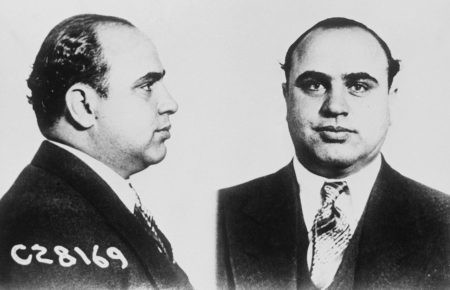The intricacies of federal tax laws can be daunting, especially when it comes to understanding how gift and estate taxes interact. Both taxes are designed to levy a tax on wealth; however, they also provide opportunities for strategic planning to minimize tax liabilities. This article will explore the fundamentals of gift and estate taxes and how they work together to impact estate planning.
The Basics Of The Gift Tax
The federal gift tax applies to the transfer of property from one individual to another while receiving nothing, or less than full value, in return. The primary purpose of the gift tax is to prevent individuals from avoiding estate tax by gifting their assets away before death.
Annual Exclusion
Each individual can gift up to a certain amount annually to any number of recipients without incurring gift tax. For 2024, the annual exclusion amount is $18,000 per recipient. In other words, you can give up to $18,000 to as many people as you like each year without those gifts counting against your lifetime exclusion.
Lifetime Exclusion
In addition to the annual exclusion, there is a lifetime gift tax exclusion, which is shared with the estate tax exclusion. For 2024, the lifetime exclusion amount is $13.61 million per individual. Gifts exceeding the annual exclusion amount will reduce the lifetime exclusion.
The Basics Of The Estate Tax
The federal estate tax is a tax on the transfer of the estate of a deceased person. It applies to the total value of the deceased person’s assets at the time of death minus any debts, expenses, and allowable deductions.
Exclusion Threshold
As mentioned above, the federal estate tax exclusion amount is $13.61 million in 2024. Estates valued below this threshold are not subject to federal estate tax, while those exceeding it will incur tax on the amount over the exclusion.
Tax Rates
The estate tax rate is progressive and applies to the portion of the estate that exceeds the exclusion threshold. The rates start at 18% (if the taxable portion of the estate is $1 to $10,000) and max out at 40% (if the taxable portion is $1 million or more). However, since the current federal estate tax exclusion amount is $13.61 million, the estate tax is imposed at a flat rate of 40% for estates that exceed the exclusion amount. The exact amount of tax owed depends on the estate’s total value and the applicable deductions and credits.
How Gift Tax And Estate Tax Work Together
Unified Credit
The unified credit (also called the applicable exclusion amount) is a key aspect of the federal gift tax and estate tax system. The lifetime exclusion amount of $13.61 million applies to both lifetime gifts and the estate at death. If you use up part of your exclusion by making taxable gifts during your lifetime, the amount remaining available for your estate at death will be reduced accordingly.
Example Of Unified Credit
For instance, if you make $3 million in taxable gifts during your lifetime, this amount will be deducted from your lifetime exclusion. As a result, the remaining exclusion available for your estate will be $10.61 million ($13.61 million – $3 million). This interplay encourages strategic planning to balance lifetime gifting with preserving the estate exclusion.
Portability Of Exclusion
To further facilitate estate planning, the tax code includes a provision known as “portability.” Portability allows a surviving spouse to inherit the unused portion of their deceased spouse’s lifetime exclusion. This means a married couple can effectively double their exclusion amount to $27.22 million (in 2024), provided proper estate tax returns are filed and portability is elected.
Strategic Estate Planning With Gift And Estate Tax
Annual Gifting Strategy
One of the most effective strategies for reducing estate tax liability is to fully utilize the annual gift tax exclusion. By regularly gifting up to the annual gift tax exclusion amount ($18,000 per recipient in 2024), individuals can gradually reduce the size of their taxable estate without dipping into their lifetime exclusion.
Lifetime Gifting Strategy
In addition to annual gifts, individuals may choose to make more significant lifetime gifts to reduce their estate’s value. This can be particularly advantageous for assets expected to appreciate significantly, as future appreciation will occur outside the estate, thereby reducing potential estate tax liability.
Irrevocable Trusts
Irrevocable trusts are another powerful tool for estate planning. Presently, two types of popular irrevocable trusts are Intentionally-Defective Grantor Trusts and Spousal Lifetime Access Trusts. By transferring assets into an irrevocable trust, the asset can be removed from the estate, potentially reducing estate tax liability. Additionally, certain types of trusts, like Grantor Retained Annuity Trusts (GRATs), can be structured to allow individuals to transfer appreciating assets while retaining income from the trust for a specified period (but note that this type of trust tends to work best when interest rates are low).
Charitable Giving
Charitable donations can also play a significant role in estate planning. Gifts to qualified charitable organizations are exempt from gift tax and can provide valuable deductions for estate tax purposes. Charitable Lead Trusts (CLTs) and Charitable Remainder Trusts (CRTs) are specialized trusts that can help individuals meet philanthropic goals while managing tax liabilities.
Potential Pitfalls and Considerations
Generation-Skipping Transfer Tax (GSTT)
In addition to gift and estate taxes, the Generation-Skipping Transfer Tax (GSTT) applies to transfers to grandchildren or other “skip persons.” The GSTT is designed to prevent individuals from avoiding estate tax by skipping a generation. However, it comes with its own exemption, which is also $13.61 million in 2024. It is important to note that the GSTT is separate from and in addition to the gift or estate tax and does not replace them. Consequently, a gift that uses a person’s GSTT exemption will also decrease the lifetime exclusion. Further, unlike the estate tax exclusion, the GSTT exemption is not portable from a deceased spouse to a surviving spouse.
State Taxes
It’s important to note that some states impose their own estate or inheritance taxes, with different exclusion amounts and rules. Estate planning must consider both federal and state tax implications to ensure a comprehensive strategy. There are currently several states that impose a separate state-level estate tax, pick-up tax, modified pick-up tax, inheritance tax, or county-level inheritance tax.[1]
Changes in Tax Laws
Tax laws are subject to change, and what is advantageous today might not be beneficial tomorrow. Regular review and adjustment of estate plans with a qualified advisor are essential to staying compliant and optimizing tax benefits.
Conclusion
The federal gift tax and estate tax are closely intertwined and are designed to work together to prevent the avoidance of taxes through lifetime transfers. By understanding the unified credit, annual exclusion, and strategic use of trusts and charitable giving, individuals can effectively plan to minimize their tax liabilities. However, navigating these complexities requires careful consideration and often the assistance of professional advisors to ensure that estate plans adhere to current tax laws and are effectively structured.
[1]
Read the full article here












